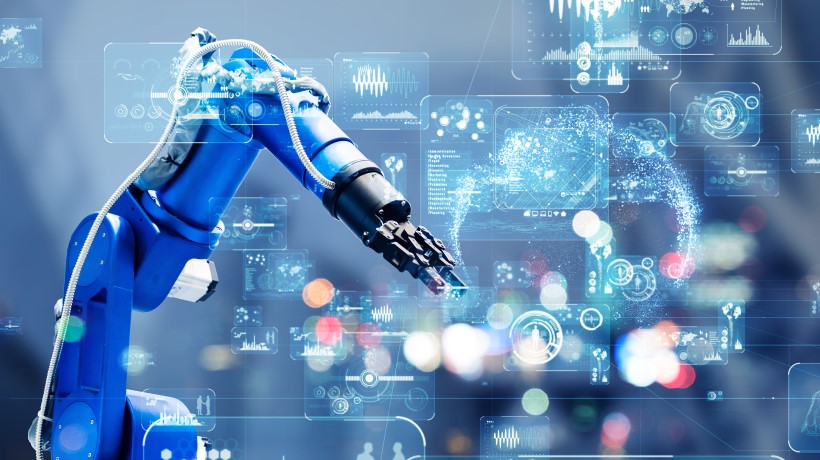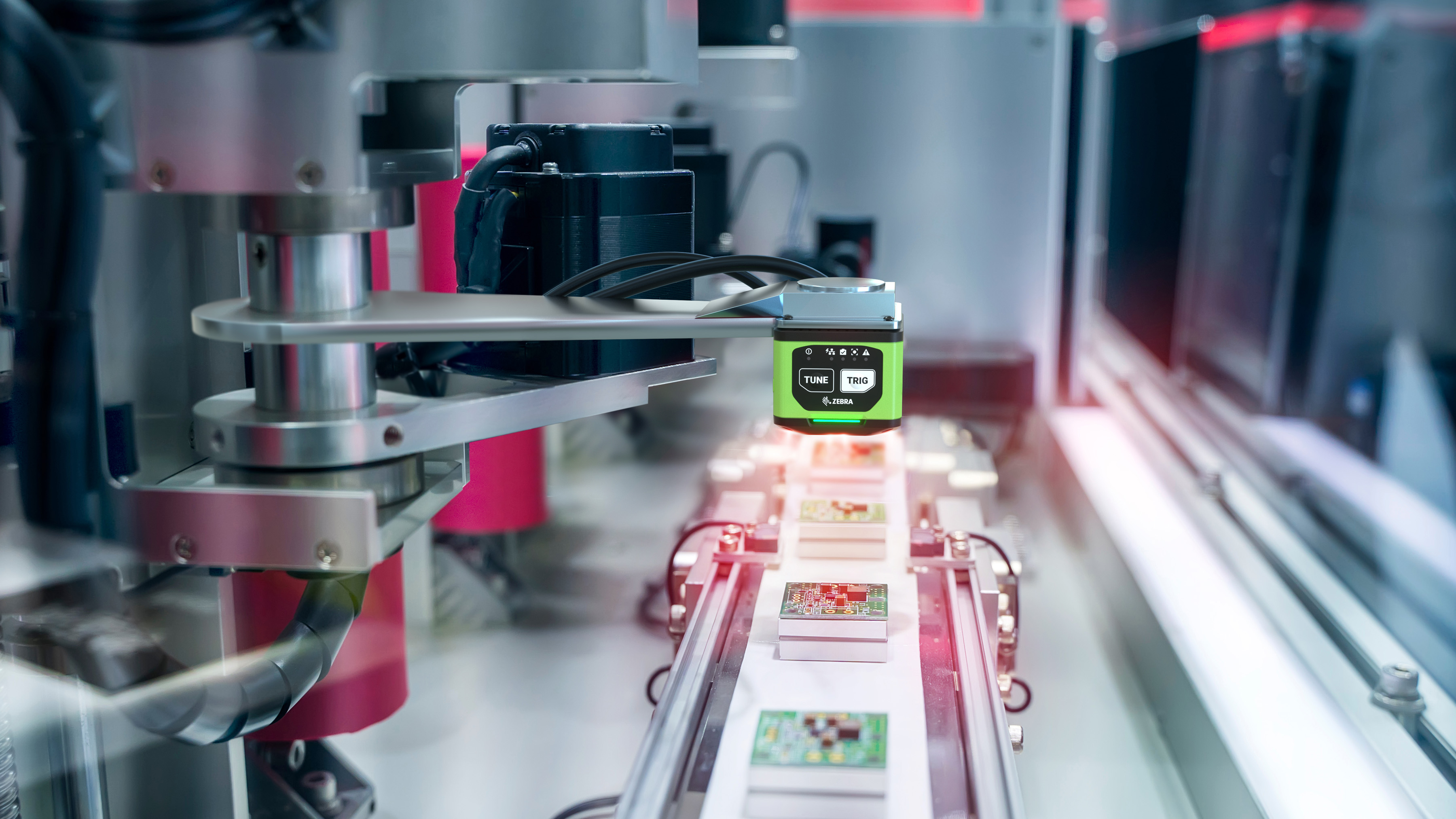A breakdown of costs and value when adopting robotic vision
Recognizing Robotic Vision: Why It Is Vital for Modern Automation Processes
Robotic vision represents a considerable development in automation modern technology. It enables machines to examine aesthetic data, improving their ability to carry out tasks with accuracy. This capability is transforming sectors by enhancing performance and reducing human mistake. The integration of robotic vision likewise presents obstacles. Understanding its effects is essential for services aiming to remain affordable. What aspects influence its fostering, and how can companies leverage this technology successfully?
The Fundamentals of Robotic Vision Technology
Robotic vision innovation works as the foundation of automation in numerous industries, enabling equipments to view and analyze their environments. This technology incorporates advanced imaging systems, such as cameras and sensing units, with sophisticated formulas that process visual information. By capturing photos and examining them in real-time, robot vision enables makers to recognize things, analyze their placements, and make informed decisions based on aesthetic input.Key components of robot vision include photo processing techniques, maker understanding models, and deepness understanding systems, which work collectively to enhance a robot's understanding of its setting. Calibration and environmental adaptability are additionally important, ensuring that systems can function effectively under varied problems. This fundamental modern technology not just boosts functional efficiency but likewise boosts safety and security by enabling robotics to navigate intricate settings while reducing mistakes and accidents. As industries continue to progress, the significance of durable robotic vision innovation remains critical in driving advancement and efficiency.
Trick Applications of Robotic Vision in Sector
The application of robotic vision modern technology covers a broad array of sectors, considerably enhancing functional capacities and effectiveness. In manufacturing, robotic vision systems enable accurate inspection and top quality control, ensuring items satisfy rigid requirements. In the automobile industry, these systems help in jobs such as component assembly and issue discovery, simplifying manufacturing lines.In logistics, robot vision plays a vital function in automated product handling, allowing robots to navigate complex atmospheres and properly identify things for arranging and packing. The food market makes use of robot vision for arranging and product packaging, guaranteeing consistency and conformity with wellness regulations.Additionally, in health care, robotic vision help in medical procedures and diagnostics, providing improved accuracy and lowering threats. In general, the varied applications of robotic vision modern technology add to increased productivity and innovation across several industries, showing its significance in modern commercial processes.
Advantages of Carrying Out Robotic Vision Solutions
Carrying out robotic vision systems offers various benefits that substantially enhance operational performance and precision across various industries. These systems enable machines to perceive and translate their surroundings, leading to enhanced decision-making procedures. Boosted accuracy in tasks such as quality assurance and sorting decreases human mistake, making sure constant product standards.Moreover, robot vision systems can run constantly, boosting efficiency while reducing labor expenses. They are qualified of doing intricate jobs at broadband, enabling faster manufacturing cycles. The combination of innovative imaging modern technologies facilitates real-time data collection, encouraging firms to assess performance metrics and enhance operations.Additionally, the flexibility of robot vision systems allows them to be utilized in varied applications, from that site auto assembly lines to food product packaging. By providing reliable and accurate automation remedies, these systems assist organizations preserve an one-upmanship in an increasingly automated market, highlighting their essential role in modern production environments.
Difficulties and Limitations of Robotic Vision
While robot vision systems offer significant benefits, they likewise encounter numerous challenges and limitations that can hinder their effectiveness. One key obstacle is the irregularity in illumination problems, which can significantly affect image top quality and result in misinterpretation of visual data. Additionally, the complexity of real-world atmospheres, full of vibrant objects and differing appearances, postures troubles in things acknowledgment and tracking.Another limitation is the dependence on top quality sensors and advanced formulas, which can be expensive and require extensive calibration. Moreover, robot vision systems may fight with Read More Here deepness assumption and three-dimensional understanding, specifically in messy settings. robotic vision.Finally, the assimilation of robotic vision with existing automation systems can be complicated, needing extensive training and programming. These obstacles highlight the importance of continuous r & d to boost the capabilities and integrity of robot vision innovations in different applications
The Future of Robotic Vision in Automation
The future of robot vision in automation assures considerable developments in improved things recognition and improved navigation systems. As innovation advances, these advancements will make it possible for robots to engage more successfully with their atmospheres and execute intricate jobs with higher precision. This progression is anticipated to redefine operational capacities across numerous markets.
Boosted Things Recognition


Improved item recognition stands at the center of improvements in robotic vision, changing just how automation systems perceive and engage with their atmospheres. This technology allows robots to identify and classify a substantial selection of things with amazing accuracy, helping with extra reliable operations throughout numerous sectors. Using deep understanding algorithms and advanced imaging strategies, systems can acknowledge items in vibrant setups, adjusting to modifications in illumination, angles, and occlusions. Consequently, improved object acknowledgment not only improves processes such as arranging, selecting, and quality assurance yet also reduces mistakes and enhances efficiency. The constant advancement in this field guarantees to additionally integrate robotics into daily tasks, substantially improving functional efficiency and leading the way for smarter automation options.
Better Navigation Systems
Improvements in navigating systems are positioned to transform robot vision in automation, enabling robotics to traverse complicated settings with unmatched precision. By integrating sophisticated sensors, expert system, and artificial intelligence formulas, these systems assist in real-time mapping and localization. This permits robotics to adapt to vibrant surroundings, staying clear of barriers and enhancing paths effectively. Enhanced navigating capabilities encourage robots to perform jobs in different setups, from storage facilities to healthcare facilities, enhancing productivity and safety and security. Additionally, the continual evolution of these technologies promises to reduce functional expenses by lessening errors and downtime. As the need for automation read review rises, enhanced navigating systems will play a pivotal function in forming the future of robot vision, ensuring smooth integration into everyday operations.
Incorporating Robotic Vision With Other Technologies
Integrating robotic vision with other modern technologies greatly enhances automation capabilities across various industries. By incorporating innovative imaging systems with expert system, artificial intelligence, and Web of Points (IoT) connectivity, companies can achieve unprecedented performance and precision in their procedures. Robotic vision can be utilized in conjunction with equipment knowing formulas to enhance things recognition and decision-making procedures, making it possible for robots to adjust to vibrant environments.Additionally, when incorporated with IoT tools, robotic vision systems can promote real-time data analysis and comments loopholes, maximizing process and minimizing downtime. This harmony enables precise quality assurance and predictive maintenance, ultimately reducing operational expenses. Assimilation with collaborative robotics (cobots) enhances human-robot communication, making automation safer and extra efficient in settings where human oversight is necessary. The convergence of robotic vision with complementary innovations is essential for driving development and productivity in modern-day automation procedures.
Regularly Asked Questions
Exactly How Does Robotic Vision Differ From Human Vision?

What Kinds of Cameras Are Made Use Of in Robotic Vision?
Different kinds of video cameras are made use of in robotic vision, including CCD, CMOS, and deepness cameras. optical fibre diameter analyser. These cameras make it possible for robotics to view their environment, promoting tasks such as object acknowledgment, navigating, and top quality evaluation in automated systems
Can Robotic Vision Solutions Pick Up From Experience?
Robotic vision systems can undoubtedly gain from experience. Through advanced formulas and maker discovering techniques, they adapt and boost their aesthetic recognition abilities, improving their performance in different tasks in time as they refine new data.
How Do Illumination Conditions Influence Robotic Vision Performance?
Illumination problems considerably impact robot vision efficiency by influencing image contrast, shade accuracy, and things detection capacities. Insufficient or extreme light can lead to misinterpretation of visual data, affecting the total effectiveness of robotic systems.
Exist Security Worry About Utilizing Robotic Vision?
Security issues with robotic vision include possible misconceptions of surroundings, causing mishaps. Insufficient sensor calibration or ecological changes can aggravate these risks, requiring strenuous screening and adherence to safety and security criteria for efficient implementation.